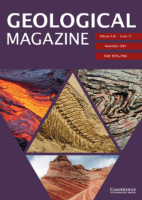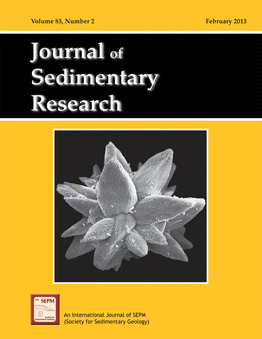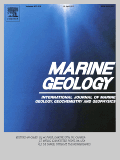
SEDIMENTOLOGY
Scope & Guideline
Pioneering research in geology and stratigraphy.
Introduction
Aims and Scopes
- Sedimentary Processes and Dynamics:
Research on the mechanisms of sediment transport, deposition, and alteration, including studies on gravity flows, turbidity currents, and sediment gravity flow dynamics. - Stratigraphic Analysis and Interpretation:
Exploration of stratigraphic architectures and depositional models, including the analysis of sedimentary facies, sequence stratigraphy, and the impact of tectonics and climate on sedimentation. - Palaeoenvironmental and Palaeoclimatic Studies:
Investigating sedimentary records to reconstruct past environments and climate conditions, utilizing geochemical, isotopic, and microfossil analyses. - Microbial and Biogenic Sedimentation:
Focus on the role of biological processes in sediment formation, including microbialites and biogenic carbonate production. - Experimental Sedimentology:
Utilization of laboratory experiments to model sedimentary processes and understand the physical behavior of sediments under various conditions. - Environmental and Anthropogenic Influences:
Assessment of the impact of natural and human-induced changes on sedimentary systems, including studies on deltaic and coastal environments.
Trending and Emerging
- Interdisciplinary Approaches:
An increasing number of studies are integrating sedimentology with other disciplines such as geochemistry, ecology, and climate science, emphasizing the interconnectedness of sedimentary processes with broader environmental systems. - Impact of Climate Change on Sedimentary Processes:
Research focusing on how climate change affects sediment dynamics, including changes in river discharge, sediment supply, and coastal erosion, is gaining prominence, reflecting global environmental concerns. - Microbial Influences on Sedimentation:
The role of microbes in sediment formation and alteration is being increasingly recognized, with studies exploring microbialites and biogenic processes becoming more prevalent. - Advanced Analytical Techniques:
The use of cutting-edge technologies such as high-resolution imaging, geochemical analysis, and numerical modeling is on the rise, enabling more detailed investigations of sedimentary processes. - Anthropogenic Effects on Sedimentary Systems:
Research addressing the impacts of human activity on sedimentary environments, particularly in deltaic and coastal regions, is emerging as a critical area of study. - Experimental and Numerical Modeling:
There is a growing trend towards experimental and numerical modeling approaches to simulate sedimentary processes, providing insights into complex interactions that occur in natural settings.
Declining or Waning
- Traditional Facies Models:
There appears to be a waning interest in simplistic facies models that do not account for the complexities of sedimentary processes and depositional environments, as researchers increasingly adopt more integrated and dynamic approaches. - Focus on Purely Physical Sedimentology:
Research that solely emphasizes physical mechanisms of sediment transport without incorporating biogeochemical or ecological perspectives is becoming less prominent, suggesting a shift towards more holistic studies. - Sedimentology of Ancient Systems:
The study of ancient sedimentary systems has seen a decrease, with a growing emphasis on modern analogues and their implications for understanding contemporary processes. - Single-Disciplinary Approaches:
There is a noticeable reduction in studies that limit their scope to a single discipline (e.g., strictly geological or purely biological) as interdisciplinary approaches gain traction.
Similar Journals

Gondwana Research
Transforming Geological Knowledge for Future GenerationsGondwana Research is a premier academic journal published by Elsevier, specializing in the field of geology, with a robust focus on the geological history and processes of the Gondwana supercontinent. With an impressive impact factor and ranking as Q1 in the 2023 Geology category, it stands as a leading platform for disseminating high-quality research. The journal features articles that advance the understanding of Earth and planetary sciences, making significant contributions to geological education and research. Researchers will find its curated content particularly valuable, as it encompasses a wide array of topics including stratigraphy, paleontology, and tectonics, all relevant to both contemporary and historical geological inquiries. Given its substantial reach and esteemed standing—ranked 5th out of 321 in its field—Gondwana Research plays a crucial role in fostering scientific exchange among global experts. Located in the United States with publication continuity from 1997 to 2024, this journal consistently attracts submissions from leading scientists, ensuring that its readership is kept at the forefront of geological discovery and innovation.

GEOLOGICAL MAGAZINE
Pioneering Discoveries in Earth and Planetary SciencesGEOLOGICAL MAGAZINE, published by Cambridge University Press, is a premier journal in the field of geology, renowned for its rich legacy since 1864 and ongoing contributions to Earth and Planetary Sciences. With an impressive Q1 ranking in Geology and a Scopus rank of #70 out of 321 journals, it holds a significant position within the academic community, appealing to researchers, professionals, and students alike. The journal covers a wide array of topics, ensuring a comprehensive platform for the dissemination of cutting-edge geological research. Although it does not offer open access, it remains a vital resource for those seeking to stay abreast of advancements in the field. With an enduring commitment to quality, GEOLOGICAL MAGAZINE stands as an essential outlet for scholarly communication and serves as a catalyst for academic discourse within the geological sciences.

Depositional Record
Connecting past and present through innovative depositional studies.Depositional Record, published by WILEY, stands as a vital resource for researchers and professionals in the fields of Geology, Paleontology, Oceanography, and Environmental Science. Since its inception in 2015, this Open Access journal has been dedicated to advancing the understanding of sedimentary processes, depositional environments, and their implications on Earth's history and contemporary climate dynamics. With an impressive array of categorizations, including Q1 rankings in Geology, Paleontology, and Stratigraphy, it underscores its significant contribution to these scientific arenas. The journal’s reach is reflected in its Scopus rankings, placing it within the top quartiles in multiple categories, indicating the high quality and impact of its published research. Researchers, students, and professionals who engage with Depositional Record will find a treasure trove of knowledge aimed at informing best practices, innovative studies, and fostering an interdisciplinary dialogue crucial for environmental stewardship and geological exploration.

JOURNAL OF SEDIMENTARY RESEARCH
Innovating Insights in Lithology and StratigraphyThe JOURNAL OF SEDIMENTARY RESEARCH, published by SEPM-SOCIETY FOR SEDIMENTARY GEOLOGY, stands as a pivotal peer-reviewed journal in the field of sedimentary geology. With an ISSN of 1527-1404 and an E-ISSN of 1938-3681, this esteemed journal features a broad scope, delving into the intricacies of sedimentary processes, lithology, and stratigraphy since its inception in 1931. Enjoying a distinguished reputation, it has achieved a Q1 category ranking in Geology for 2023 and ranks 87 out of 321 in Earth and Planetary Sciences, placing it in the 73rd percentile among its peers in Scopus. With continued access options available, it facilitates the dissemination and discussion of cutting-edge research that shapes the understanding of sedimentary phenomena. Researchers, professionals, and students alike benefit from this critical platform that fosters academic engagement and drives progress within the field.

JOURNAL OF PALEOLIMNOLOGY
Pioneering Research on Aquatic Environments Through the AgesJOURNAL OF PALEOLIMNOLOGY, published by Springer, stands as a pivotal resource in the field of paleolimnology, bridging the disciplines of aquatic sciences and earth-surface processes. With an impact factor that showcases its scholarly influence and ranking it in the Q2 category for both Aquatic Science and Earth-Surface Processes, this journal has established a reputation for advancing our understanding of past aquatic environments through rigorous studies of sedimentary records. Since its inception in 1988, it has become a vital platform for researchers to disseminate their findings on climate change, biodiversity, and ecological shifts, revealing insights crucial for contemporary environmental science. Despite the lack of open-access options, the journal provides numerous subscription-based resources, ensuring that vital research is accessible to a wide audience. Located in the Netherlands, the journal continues to attract contributions from a global network of scholars aiming to explore the interplay between environmental change and aquatic systems.

MARINE GEOLOGY
Advancing Knowledge of Oceanic Geological Processes.MARINE GEOLOGY, published by Elsevier, is a premier journal dedicated to advancing the understanding of marine geological processes and their interactions with the Earth's systems. With an ISSN of 0025-3227 and an E-ISSN of 1872-6151, this esteemed journal has been a vital resource for researchers and professionals since its inception in 1964. The journal is recognized for its high impact, with commendable rankings, including Q1 in both Geology and Oceanography, and Q2 in Geochemistry and Petrology according to its 2023 category quartiles. With a Scopus rank within the top percentiles in various fields, MARINE GEOLOGY offers a platform for original research, critical reviews, and significant advancements in the field, covering topics ranging from sedimentology to geochemical processes in marine environments. Although it does not operate under an open-access model, its rigorous peer-review process ensures high-quality publications that contribute to our understanding of oceanic and geological sciences. Researchers, students, and professionals alike will find MARINE GEOLOGY to be an essential resource for collaboration and discovery within the vast field of marine science.

GEOLOGICAL JOURNAL
Advancing geological knowledge through peer-reviewed excellence.GEOLOGICAL JOURNAL, an esteemed publication by WILEY, has been at the forefront of geological research since its inception in 1951. With an ISSN of 0072-1050 and E-ISSN of 1099-1034, this journal serves as a vital platform for disseminating high-quality, peer-reviewed research in the field of geology. Operating out of the United Kingdom, the journal proudly features a Scopus rank of 80 out of 321 in the Earth and Planetary Sciences category, reflecting its commitment to scholarly excellence, with a 2023 category quartile ranking of Q2. As part of its innovative approach, GEOLOGICAL JOURNAL seeks to foster interdisciplinary collaborations, advancing our understanding of earth processes, materials, and history. Although it does not offer open access options, its robust subscription model ensures that both professionals and students have access to groundbreaking insights. With a publication history that spans over seven decades, the GEOLOGICAL JOURNAL continues to be an indispensable resource for the global geological community, encouraging discoveries that shape our comprehension of the planet.

GEOLOGICA ACTA
Connecting scholars, shaping geological innovation.GEOLOGICA ACTA is a distinguished open-access journal dedicated to the field of geology, published by Universitat de Barcelona since its inception in 2003. With an impact factor that reflects its relevance in the academic community and a commendable Q2 ranking within the Earth and Planetary Sciences category, this journal is committed to disseminating high-quality research that spans various aspects of geological sciences. The journal's broad scope encompasses both theoretical and applied research, making it a vital platform for researchers, professionals, and students alike to share their findings with a global audience. With its Open Access policy, GEOLOGICA ACTA ensures that all published articles are freely accessible, fostering collaboration and innovation in the geological community. Based in Barcelona, Spain, at the Geociences Barcelona (CSIC), it plays a pivotal role in connecting scholars from diverse backgrounds and advancing the field of geology through rigorous peer-reviewed articles.

PALAIOS
Bridging Paleontology and Sedimentary SciencePALAIOS is a renowned journal published by the SEPM-Society for Sedimentary Geology, focusing on the interdisciplinary fields of paleontology and sedimentary geology. Established in 1986, this scholarly publication serves as a vital platform for disseminating innovative research and insightful reviews that bridge ecological and evolutionary aspects with paleontological studies. With an impressive track record, the journal has achieved a commendable impact factor and consistently holds a Q2 ranking in both Ecology, Evolution, Behavior and Systematics and Paleontology as of 2023. Researchers and professionals will benefit from the diverse range of studies presented, which encompass fossil analysis, stratigraphy, and the impacts of climate change on past ecosystems. By being at the forefront of research and education in these fields, PALAIOS not only enhances comprehension of historical biodiversity patterns but also informs contemporary ecological theories.

Journal of Sedimentary Environments
Fostering Collaboration in Sedimentary Science.Journal of Sedimentary Environments is a leading open-access publication dedicated to advancing the study of sedimentary processes and environments. Published by SPRINGER HEIDELBERG, this journal embraces a wide array of topics including sedimentology, paleoenvironments, and the interactions between sediments and ecosystems. Since its transition to open access in 2016, it has prioritized making high-quality research widely available, fostering collaboration and innovation among researchers, professionals, and students in the field. With a commitment to excellence, the journal aims to publish groundbreaking studies that enhance our understanding of sedimentary environments, making it an essential resource for anyone interested in the dynamics of Earth’s sedimentary systems. Located in Heidelberg, Germany, this journal is poised to play a vital role in shaping current and future research discussions worldwide.